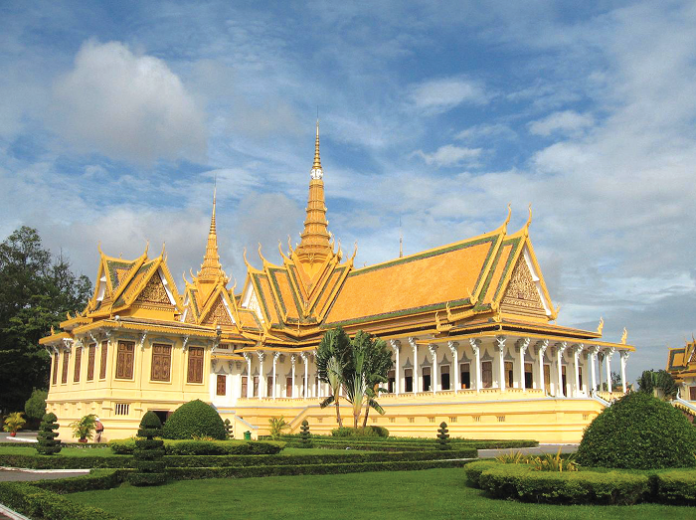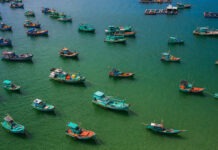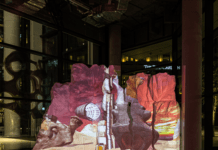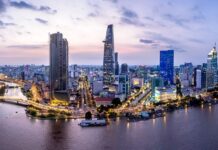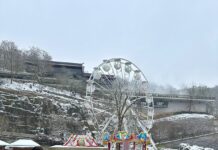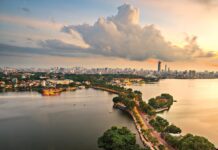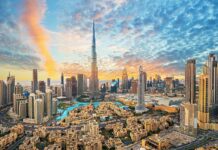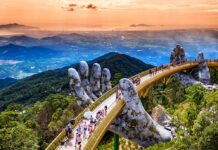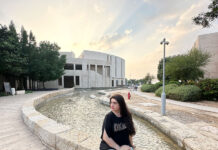Tourism is one of the fastest growing sectors of the Cambodian economy; with over 3 million visitors, mainly from Vietnam, South Korea, China, United States and Europe, visiting the country in the first 11 months of 2012, Cambodia is now targeting five million visitors by 2015. Here we look at just some of the main tourism spots of Cambodia.
Known to posterity by its Sanskrit name of Kambuja, the Kingdom of Cambodia has a history that extends back to the 4th century BCE, with evidence pointing to cultural and trade links with the Indian subcontinent lying more than 3,500 kilometers away.
These early relations grew stronger over the centuries and by the First Millennium CE, at the start of the Khmer Empire, cultural, religious, social and business ties with India and surrounding countries were flourishing. Pali Sanskrit was the language of the intellectuals, while Hinduism and eventually Buddhism became the predominant religion. For over 600 years the influence and culture of the Khmer Empire stretched across much of Southeast Asia.
At the zenith of its power, between the 12th and 14th century, Angkor, the capital of Khmer Empire, was the largest city in the world. The city of Angkor, which at the height of its prosperity had an urban sprawl of close to 3,000 sq km, has left behind remnants of its architectural magnificence in the form of Angkor Wat, the large temple complex, which in Sanskrit also means the ‘City Temple’. Angkor Wat, which at the time it was built, was the biggest Hindu temple complex is today the largest religious monument in the world. Covering an area of 821,248 square meters, the temple was built over a period of 40 years during the reign of King Suryavarman II in the 12th century. Surrounded by a 190m wide moat and enclosed within a 4.5m high outer wall of 3.6km, the temple complex is built atop a terrace along three galleries one rising above the other. The temple complex, admired for its scale, architectural grandeur and design harmony, has at its center five towers arranged in a quincunx. The interior and exterior of temple walls are extensively decorated with bas reliefs of gods and goddesses from Hindu mythology.
Carved lintels and pediments decorate the entrances to the galleries and the inner shrines. From late 13th century, the country’s religious predominance shifted from Hinduism to Buddhism and subsequently the temple became a site for Buddhist rites. In 1586, Antonio da Madalena, a Portuguese monk and one of the first Western visitors to the temple described it as, “…of such extraordinary construction that it is not possible to describe it with a pen, particularly since it is like no other building in the world.
It has towers and decoration and all the refinements which the human genius can conceive of.” During the 20th century, Angkor Wat underwent extensive restoration work, interrupted by occasional periods when civil wars hampered work. Early restoration included the removal of accumulated earth and vegetation. From, 1986 to 1992 the Archaeological Survey of India carried out more detailed restoration work and the temple was recognized in 1992 by the United Nations as a World Heritage Site. The temple, the pinnacle of classical style of Khmer architecture, and a symbol of pride in Cambodia, currently appears dominantly on its national flag and remains the country’s main tourist attraction. Phnom Penh, Cambodia’s capital city is located at the confluence of three rivers – the Mekong, the Bassac and Tonle Sap. The city is divided into three distinct sections — the north, an attractive residential area; the south or the French part of the city with its ministries, banks and colonial houses; and the centre or the heart with its narrow lanes, markets, foods stalls and shops. A stone’s throw away from the banks of Tonle Sap is the royal Palace built on the site of the Banteay Kev, a citadel that was built in 1813. The Palace grounds contain several buildings, including the spectacular Silver Pagoda, which owes its name to the 5,000 silver tiles weighing 1kg each which cover the entire floor. The walls surrounding the compound are covered with frescos depicting scenes from the Khmer version of the Hindu epic Ramayana. Sihanoukville, Cambodia’s premier beach town, with its white sand beaches and warm Gulf of Thailand waters, was constructed in the late 1950s as a port city. Cambodia’s only deep-sea port is located here and considerable international aid has been spent to improve the infrastructure in the province.
The town which is much newer, more urban and cosmopolitan than most Cambodian provincial cities has a laid back, beach front atmosphere that makes it a great little tropical getaway. Although tourism has increased over the past few years, the beaches of Sihanoukville are some of the most unspoiled in all of Southeast Asia. Lined by lovely beaches and facilities for swimming, snorkeling, scuba diving or just sunbathing, Sihanoukville also offers boat trips to many of the nearby islands. Preah Vihear Temple is located in an attractive countryside slightly east of the mid section of the Dongrek Mountains, in the northern part of Cambodia. Perched on the edge of a giant cliff, about 625 meters above sea level in Preah Vihear Province, the temple offers a commanding view over northern Cambodia, Preah Vihear is difficult to visualize as a whole, the series of ascents over the best part of a kilometer, the ornate Gopuras and the wealth of decorative detail truly staggers one’s imagination. Located close to the border with Thailand the temple and surrounding areas were a source of long standing dispute between Cambodia and Thailand. Though the International Court of Justice awarded the temple and its environs to Cambodia in 1959, it still remains a bone of contention between the two countries. Kampot is a small town on the Tuk Chhou River, 5km inland from the sea, where fishing and farming are the main activities and walking around town looking at crumbling French built blues huttered shop fronts is a visitor pasttime. Located at 42Km distance from the provincial town of Kampot, the Bokor resort was founded by the French in 1922 and served as a leisure place for French colonists. The Mountain of Bokor has 1,075-meter height, good weather and beautiful natural view with large trees and rocks shaping up as animal figures.
Tourists and business travelers may purchase a Cambodian visa valid for one month at the airports in Phnom Penh and Siem Reap, and at the country’s land borders with Thailand and Vietnam. For most visitors to the Kingdom, visas are obtainable upon arrival at both Phnom Penh and Siem Reap International Airports. Visas are also available at land crossings. However, some nationalities, including those from Afghanistan, Algeria, Arab Saudi, Bangladesh, Iran, Iraq, Pakistan, Sri Lanka, Sudan and Nigeria, are required to get visa in advance at Royal Embassy of Kingdom of Cambodia in their country. The nationals of the Laos, Malaysia, Philippines, Singapore, Vietnam, Thailand, and Indonesia do not need a tourist visa and may stay in Cambodia for 30 days.





